Shade doesn’t have to be your enemy in the garden. And it shouldn’t limit your gardening space, either. In this post, we’ll show you how you can use shade gardening to your advantage to grow healthy plants.

When planting your garden, you may find places that are exposed to an excess of sun, or too much shade. Don’t worry. That’s the hand that most gardeners are dealt.
How can you ensure all parts of your garden are flourishing? Try shade gardening.
What Is Shade Gardening?
Shade gardening is a way of working with the sun available for your plants. It’s a way of making the most out of the shade—instead of regarding it as your enemy.
We’re using shade gardening here in a specific sense. We don’t mean just planting flowers that can grow in the shade.
Rather, we want to include the concept of shade cloth gardening or deliberately creating shade in your garden.
Why would you want to create shade in your garden? Because it can actually be good for the plants, especially if you live in an area that gets a lot of sun.
Direct sunlight can harm plants. Filtered sun, on the other hand, can help them grow strong and healthy. It will also control the amount of heat the plants get.
Draping shade cloth over a simple structure is one of the easiest ways to get started with shade gardening, as you’ll see.
Best Shade Gardening Ideas for You
Are you trying to control the amount of heat your plants are getting, or are you trying to grow your plants in shade? There are a few different methods to shade gardening. Explore them now to figure out which one is best for you.
Shade Cloth Gardening Ideas
Shade cloth is perfect for controlling the amount of sun your plants get daily. You can cover them with a cloth or build structures that create a shade covered spot for your plants to flourish.
The process is up to you. Take a look at these shade cloth gardening designs and ideas and find which fits your garden best.
1. Half Tent Canvas
Using steaks and a piece of canvas, you can create a small amount of shade for your little plants.

These small half tent canvases are perfect for a single small raised garden bed.
2. Small Structures
Use small gardening structures to enclose each section of your garden. You can place shade cloth on specific plants that need less sun and remove the cloth if less shade is needed.
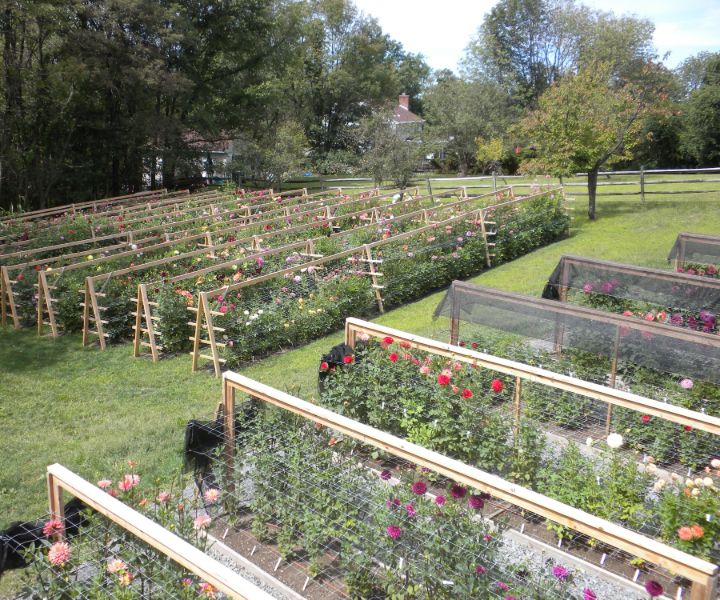
These structures are great for controlling growth in your garden as well.
3. Propped Canvas
With tall steaks and a large spread of canvas, you can cover multiple flower beds with ease. This way, you can create shade to prevent direct sunlight that can harm most plants.

The tall propped canvas allows for more growth and free movement amongst your shade garden.
4. White Cloth
White cloth tents are often fairly loose but still offset the amount of sun your plants are exposed to.

Using a tent structure, you can easily drape and tact a piece of white cloth for garden beds that just need a little extra shade.
5. Green Cloth Tents
Loose-fitted green cloth is great for deflecting the sun while still allowing ventilation for your plants.

Cover short plants with arches of green cloth to let in the right amount of sun.
6. Floating Covers
High-posted shade cloth will help protect your garden from the sun and frost. This technique is perfect for large gardens with a variety of plant life.

Your plants can grow as tall as they want without being stifled by arches.
7. Black Cloth Structures
Create your own shade garden with a full cloth structure. These dome-like greenhouses protect your plants from the sun instead of harnessing it.
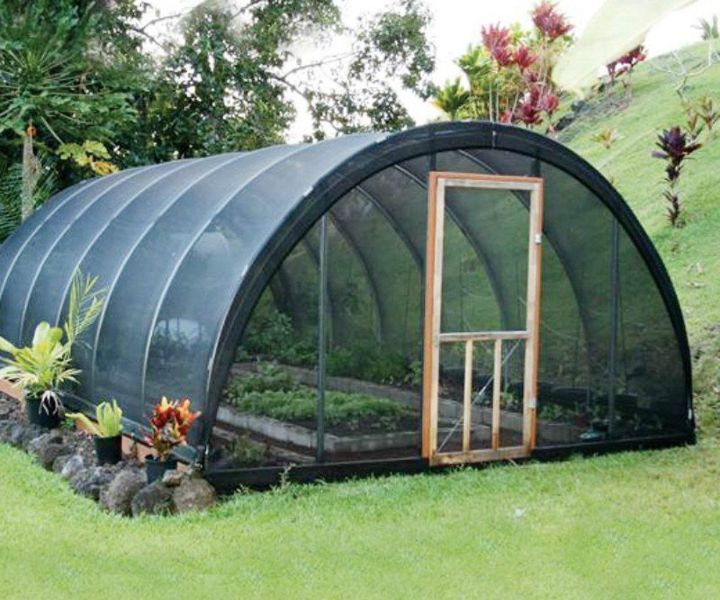
Black cloth is typically the strongest against preventing sunlight from reaching your plants.
8. Thick Black Cloth Shade Gardening
Keep your plants protected with thick black shade cloth. Thicker cloth has tighter threading and protects your plants from the sun to a greater extent.

By placing your cloth low you can prevent all points of sunlight.
9. Hanging Canvas
Drape your flower beds with sun-blocking canvas. You can let thicker layers down as the sun becomes more intense.

Hanging canvas makes controlling the amount of sun and shade your plants receive easy.
10. Green Roof Canvas
Shade gardening can be a major project if you want it to. You can use major structures that create a large spread of shade to foster plant growth while providing comfort to your plants.

You can find small rows of green cloth coverings, or large structures—your choice.
Gardening in Partial Shade Ideas
If you’ve already got shade to work with and you’re not sure what to plant there, these shade gardening designs might be perfect for you!
11. Ferocious Ferns
Many fern types grow great in the shade. Use them to accent your undergrowth.
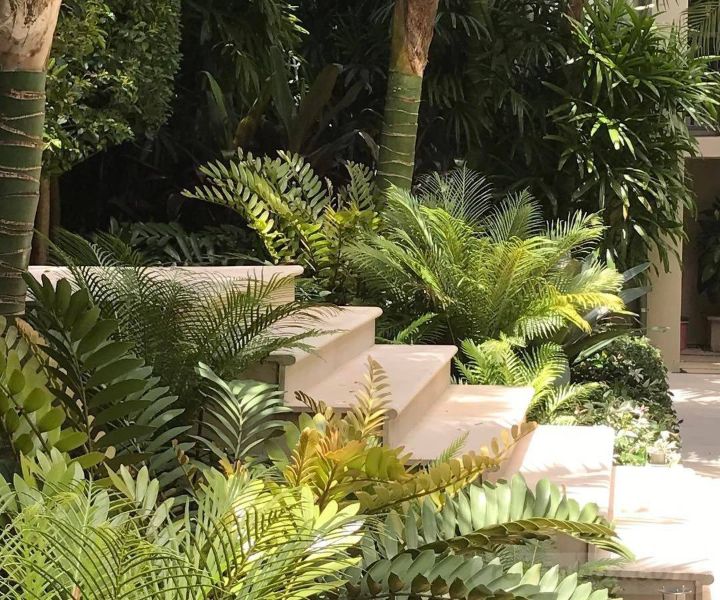
Tip: Spikey ferns with bright leaves are great for entrances and dark spots under trees.
12. Resting Greens
Create a unique gardening space in the darkest of spots. Small bushes and greens that don’t need much sun will easily fill up a flower bed.

Add some color with small flowers and blooms to make your greens pop.
13. Colorful Brush
Leaf plants are the most popular in shade gardening. They need low light to grow into their gorgeous colors.

They come in lots of varieties, so lots of options for you to choose from.
Tip: Use different species of leafy plants to achieve a rainbow of color in the shade.
14. Shade Garden with Statue
You can also dress up your garden with something that requires no sunlight at all—fixtures.

A neat statue layered in your greenery will turn a patch of ungrowable garden into a unique space.
15. Layered Flowers
In between your bursting leaf plants, throw in a breed of bursting flowers like in this example below.
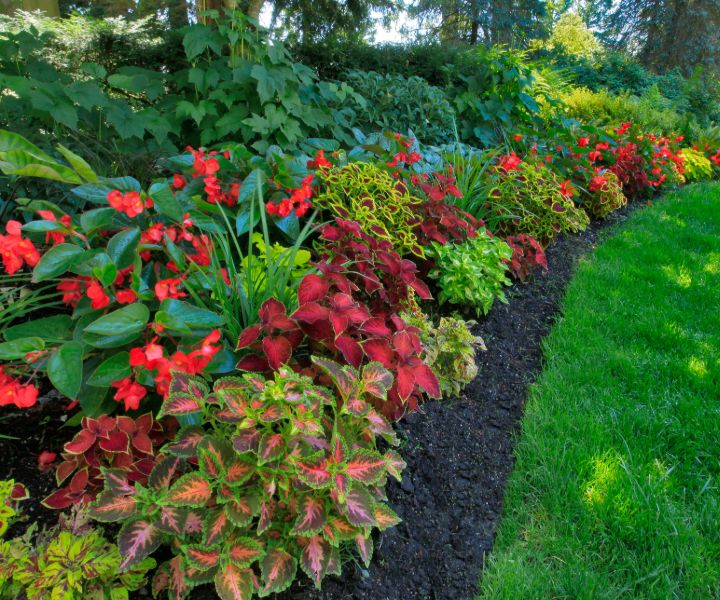
These flowers will likely bloom in bushes and be planted in bunches like most low light flowers.
16. Sunless Herbs
Of the herbs and weeds that grow in nature, a lot of them don’t need a lot of direct sunlight.
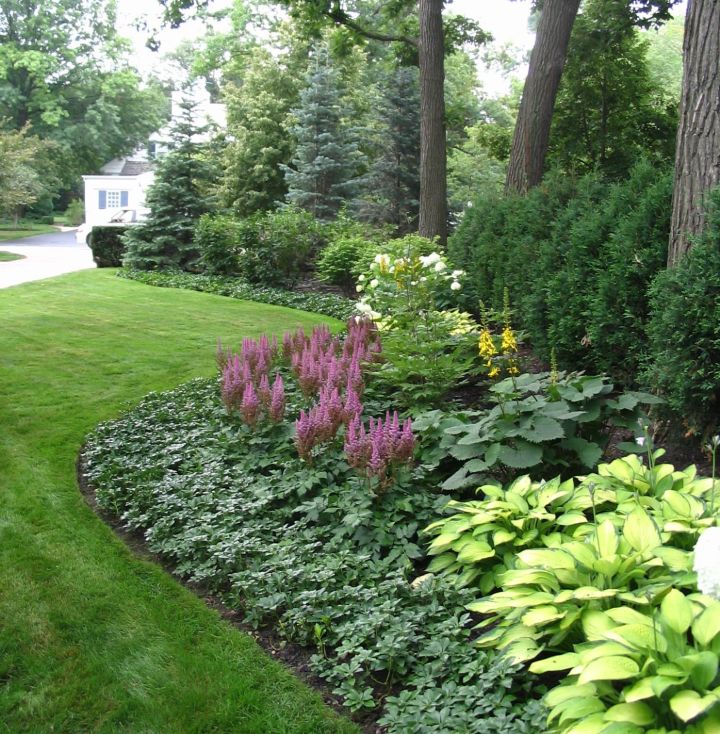
Highlight your shade garden with colorful herbs to create a naturally growing brush.
17. Greener Grass
Wild grasses and clovers love the shade! Find some grass plants you like and let them grow wild in your shade garden.
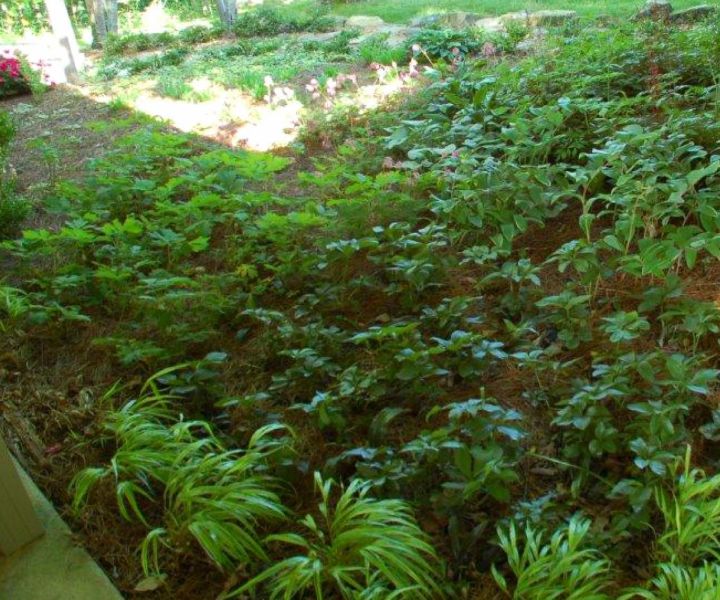
The result can be a garden that looks like a patch transplanted to your home from a forest.
18. Under the Tree
You can keep a singular theme in your shade by keeping the same leaf plant species. Think large bushes that explode in shade gardens!

The hosta is one of the most popular leaf plants. It produces gorgeous large dark green leaves with bright green highlights.
19. Blooming Bushes
There are few bushes that blossom into beautiful accents, and you want them in your shade garden.
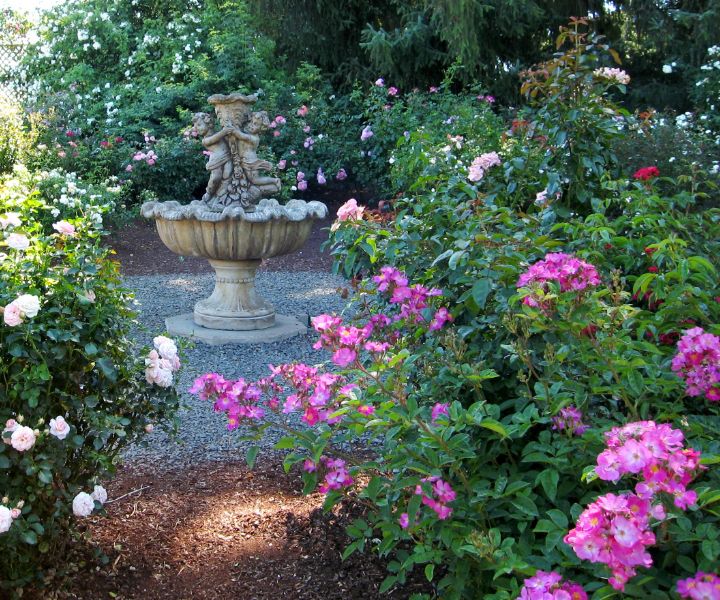
Highlight your shade with colorful flowers that will burst from your greenery.
20. Overgrowth Shade Gardening
Some bushes love the shade and will continue to grow into beautiful blossoms. Even in the shade, you can have a variety of plant life.
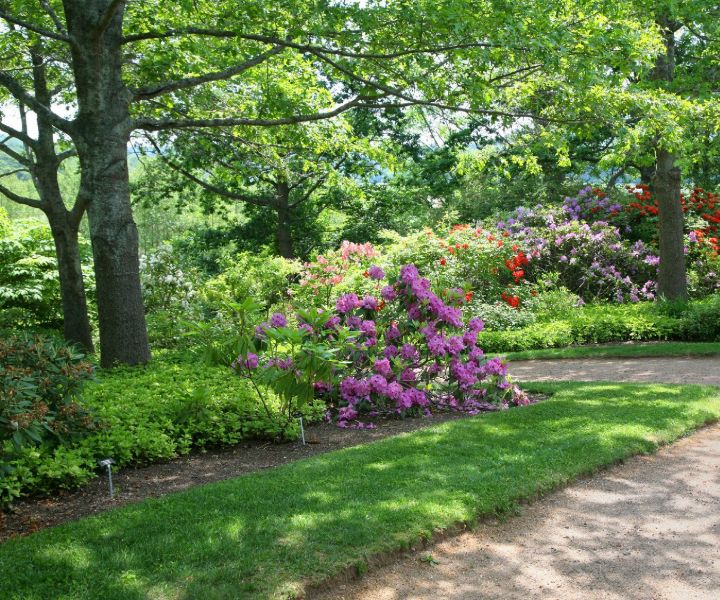
Let your plants grow wild!
DIY Shade Gardening Ideas
If you’re interested in harnessing your shade garden, maybe some of these DIY ideas will speak to you. You can carry them out yourself or with a bit of help from a friend or spouse.
21. Staged Green Canvas
Using a bit of strong wire, you can build easy to move shade planks.

Form your wire into half tents and snap your green cloth over the top to create a shaded haven for small plants.
22. Table Tubes
If you have a plastic table or buildable pipes, you can create your own shade tent like in the example below.
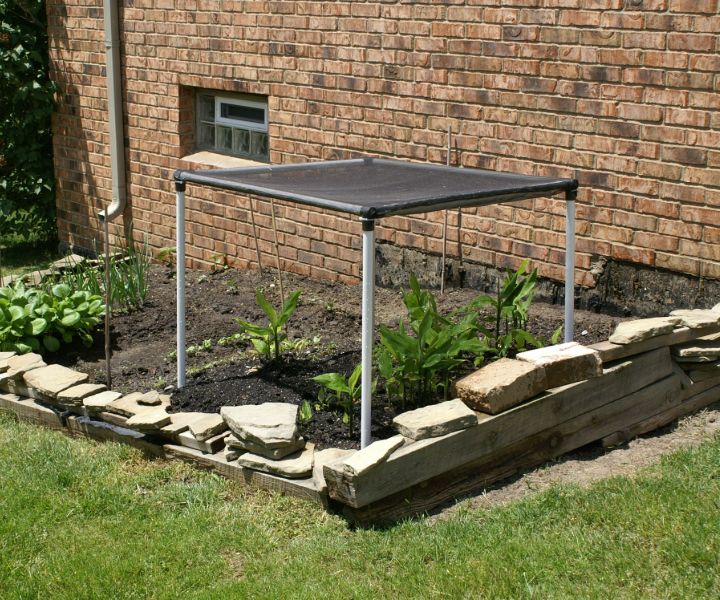
Set up your pipes like a table but instead of the top pull your cloth over the final piece.
23. Bone Garden
Some cribs or furniture often have boxy “bones” or structures that keep it in its shape. If you’re able to get your hands on a square structure you can turn it into a shade tent.
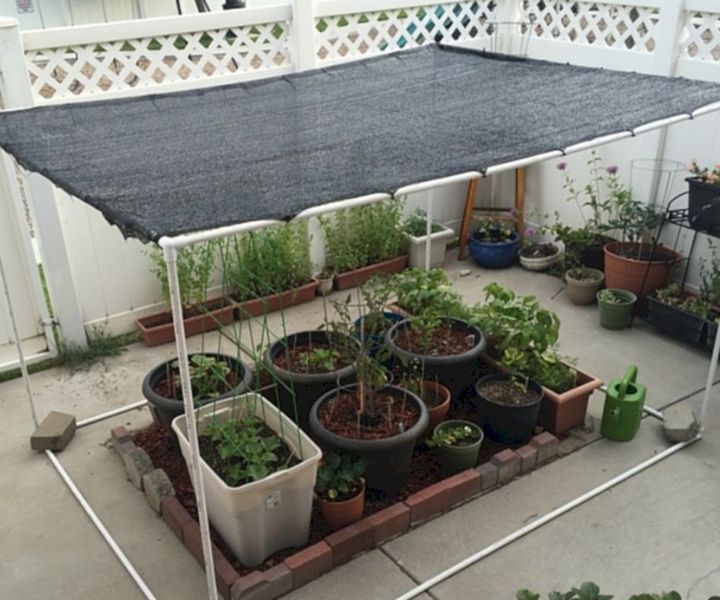
Simply clip your cloth over the top of the structure and place it over your garden.
24. Pallet Shade
Pallets are used in moving shipments and large amounts of product. These wooden planks can create perfect shade for your garden.

Post up the pallet using strong wooden steaks, fix the pallet to the steaks, and add some vine wire to build a shade garden!
25. Repurposed Cloth
Using proper arches, or ones you’ve made yourself, spread the cloth across posted structures that cover your garden.

Clip the cloth to the fixtures and lead your cloth to make your own shade. If you don’t want to create extra shade be sure your cloth spreads as a tent for the entirety of its length.
26. Repurposed Canvas
You can always reuse canvas bags and materials in your garden.

Flatten out and clean your canvas before piping through wires to arch over your greens.
27. Folding Panels
Most gardening shade cloth has buttons and claspers that can be wrapped around any structure to create a haven for shaded plants. See this example.
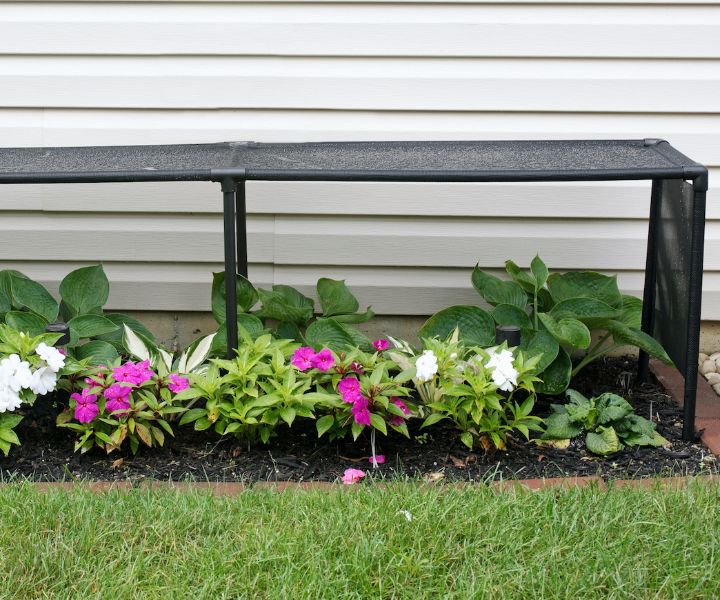
Easy to manage folding panels can be turned into helpful gardening aides.
Backyard Shade Gardening Ideas
How can you incorporate shade gardening into your home? It’s not that hard. Whether you’ve got too much shade, or not enough, here’s some inspiration for you.
28. Simple Canopy
Canopies like this one need little space and only need to be secure on three points. Create a focal point with the center prop of your canopy.

If you want to control the sun in your backyard, a simple canopy may be perfect for you.
29. Growing Greens
If your backyard rarely sees sun, you may have to do some creative planting. Using a mix of tall and low plants can fill up a small space in no time.

Tip: Focus on greens and vines that love water but don’t like the sun.
30. Floating Canopy
Floating canopies can spread across wide patios and offer plenty of shade. Since they hang from your roof to a fixed point, they also don’t take up any space.

Floating canopies can spread your shade and make shade gardening even easier.
31. Unique Designs
Transform your dark corner into a cheerful meadow. Use natural accents like rocks to create a unique space in your garden.

Shade gardening can be done with many colorful flowers and leaves!
32. Fun Fixtures
Add some flair to your shade garden with garden fixtures for your plants. Hang your plants in the shade to bring extra color to your green space.

If needed you can move the plant over to the sun and bring it back to your shade!
33. Blinds
Harness your shade by posting up your own blinds for your patio space. Pull-down sun blinds are perfect for controlling how much sun is shining in your yard.

Blinds can also help you add some privacy to your patio if it’s close to your neighbor’s fence.
34. Hanging Plants
Use your greenery as a way to create and manage shade in your backyard. Think hanging plants.
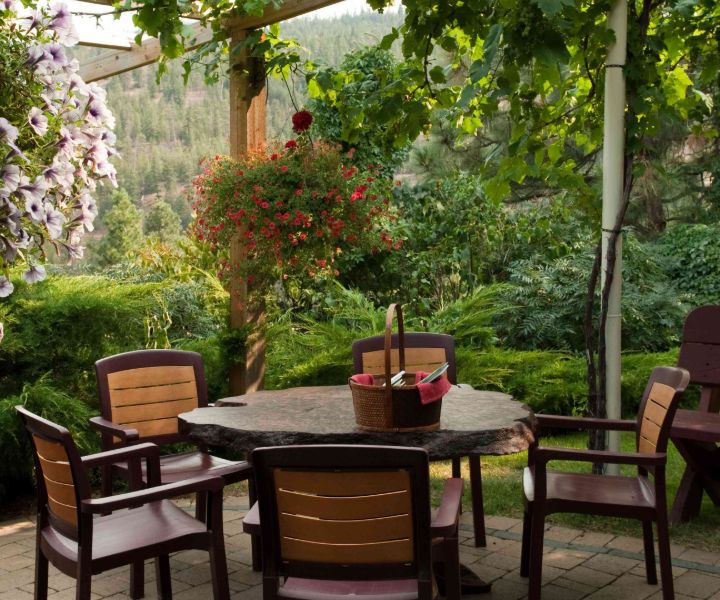
Floating leaves and blooms can enhance your space by not just bringing shade but beauty as well.
35. Shaded Walkway
Use your shaded area to line a unique walkway in your yard. You could plant vines to grow up and create welcoming greenery.

Line small shrubs and bright greens to create a fun space in your otherwise dark path.
Shade Cloth Gardening: How to Get Started
Never tried shade cloth gardening before? Getting started with it doesn’t require many resources or time. A bit of planning will get you a long way.
Follow this simple step by step guide to get started with shade gardening. As you’ll see, it’s really easy.
Step 1 – Know Your Plants
Some plants need a lot of sun, others do well in the shade. Shade gardening starts with understanding your plants and their light requirements.
Our plant growing guides always feature information about light, so make sure to check them out.
Step 2 – Choose the Right Cloth
Do you need to cover a large area or a small one? And do you need light shade, heavy shade, or something in between?
Based on your answers, you can choose light or thick cloth. You can also choose a darker shade—or even dark cloth—for maximum shade.
Whatever cloth you choose, make sure it’s durable and weather resistant. In most cases, you’ll probably want it to allow water through.
Step 3 – Build a Solid Structure
Shade cloth isn’t usually heavy, but you do have to anchor it against the wind. PVC is a lightweight and durable alternative to wood and metal.
But there’s no right or wrong choice when it comes to the materials.
Step 4 – Fix the Cloth Well
This is a step you don’t want to get wrong. You want the cloth to be safe from the wind but at the same time easy to take off if needed.
For non-permanent projects, look for clamps or fastenings instead of using wire.
Step 5 – Observe and Adapt
Keep an eye on the plants under the cover. Based on what they are seeing, add or remove shade, and adapt your design. It’s not rocket science—only practical gardening!
Shade Gardening Frequently Asked Questions
Still got some questions about shade gardening? We’ve gathered together in this section the most frequent questions we’ve heard on this topic recently. Explore the answers below.
What plants do best in shade?
The best shade plants include hostas, ligularia, aconitum, ground orchid, viola, astilbe, astrantia, and wood anemone, to name only a few.
We’ve written a whole guide on the best shade plants for shade gardening, so you may want to check it out.
What can I do with a shady garden?
You can grow tens of plants using shade gardening, whether you choose to create a shade cloth garden or use the existing shade provided by trees, tall bushes, and existing structures. From flowering plants to shrubs to climbers, you have lots of options.
How do I make my garden shady?
The easiest way to get started with shade gardening without planting trees that take time to grow is to use shade cloth to control the amount of shade your plants are receiving.
For this, you will need a simple PVC, metal, or wood structure and inexpensive shade cloth available at most DIY stores and some garden centers, as well as online.
What can you plant on the shady side of a house?
You can plant shade perennials, flowering shade plants, shade-loving shrubs, or shade plants in pots, including spiderwort, hostas, hellebore, viola, aconitum, hydrangea, foxglove, Japanese rose, azalea, ivy, climbing hydrangea, begonias, or ferns. Explore now more shade gardening ideas.
When “Shady” Isn’t Bad—At All!
We hope you’ve understood by now that shade gardening isn’t just a compromise but an effective way to control the amount of sunlight your plants are receiving.
There are so many options for plants, designs, and cloth that you can create a shade garden that’s both functional and interesting.
And in the process, create optimal growing conditions for lots of shade-loving or part-shade plants.
Do you have any previous experience with shade gardens? Share them with us in the comments section below and let us know how you throw shade!
And if you found this article useful, don’t forget to share it with other gardeners who may be interested in shade gardening.
Until next post!

steaks? how about stakes